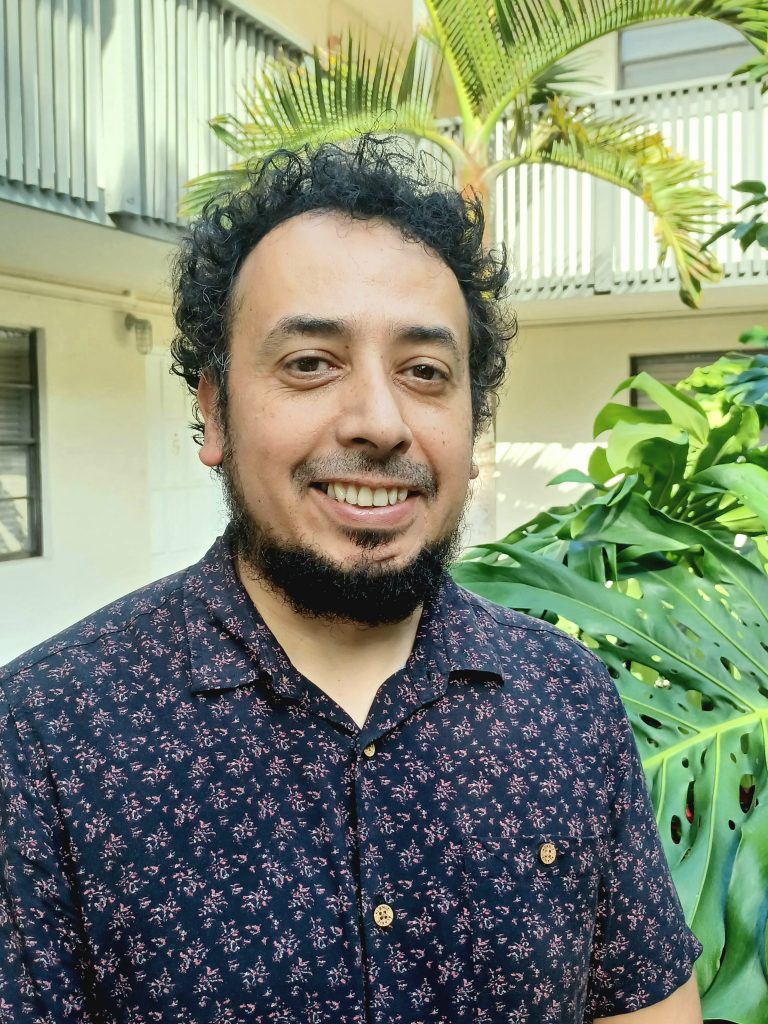
Research Interests
High-resolution ocean-biogeochemical modeling.
Ocean Acidification progression.
Seasonal to decadal variability of large marine ecosystems.
River runoff impact on coastal ecosystems.
Fabian A. Gomez, Ph.D.
Research Scientist (Northern Gulf Institute), Physical Oceanography Division
4301 Rickenbacker Causeway
Miami, Florida 33149
“High-resolution ocean-biogeochemical models simulate the spatiotemporal variability of important ecological and marine chemistry processes, providing a conceptual framework to better understand observed ocean patterns, as well as to foresee ecosystem responses to anthropogenic disturbances and climate variability.”
Dr. Fabian Gomez is a Research Scientist at the Northern Gulf Institute (NGI) and the Physical Oceanography Division at NOAA’s Atlantic Oceanographic and Meteorological Laboratory (AOML). Dr. Gomez’s research focuses on examining plankton and marine chemistry variability using three-dimensional high-resolution ocean-biogeochemical (BGC) models. He has expertise configuring ocean-BGC models in the Regional Ocean Model System (ROMS) and NOAA’s Global Fluid Dynamics Laboratory’s (GFDL) Modular Ocean Model (MOM). He is particularly interested in understanding how large-scale climate variability modes (such as ENSO, MJO, and AMO) impact regional marine ecosystems, and examining past and future changes in marine productivity and carbonate chemistry associated with anthropogenic climate change and ocean acidification.
Current Work
Dr. Fabian Gomez is involved in multidisciplinary projects to examine ocean acidification in the Gulf of America (GoM) and US East Coast, as well as to investigate potential impacts of climate variability on the recent declines of coastal pelagic species in the GoM and South Atlantic Bight.
2003, B.S. Fisheries, Catholic University of Valparaiso, Chile
2008, M.S. Fisheries, University of Concepcion, Chile
2015, Ph.D. Biological Oceanography, Oregon State University, OR
- Gomez, F.A., R. Wanninkhof, L. Barbero, and S.-K. Lee. Mississippi River chemistry impacts on the interannual variability of aragonite saturation state in the northern Gulf of America. Journal of Geophysical Research-Oceans, 129(2):e2023JC020436, https://doi.org/10.1029/2023JC020436 2024
Ref. 4388 - Lee, S.-K., D. Kim, F. Gomez, H. Lopez, D. Volkov, S. Dong, R. Lumpkin, and S. Yeager. A pause in the weakening of the Atlantic meridional overturning circulation since the early 2010s. Nature Communications, 15:10624, https://doi.org/10.1038/s41467-024-54903-w 2024
Ref. 4470 - Oehlert, A.M., J. Garza, S. Nixon, L. Frank, E.J. Folkerts, J.D. Stieglitz, C. Lu, R.M. Heuer, D.D. Benetti, J. del Campo, F.A. Gomez, and M. Grosell. Implications of dietary carbon incorporation in fish carbonates for the global carbon cycle. Science of the Total Environment, 916:169895, https://doi.org/10.1016/j.scitotenv.2024.169895 2024
Ref. 4384